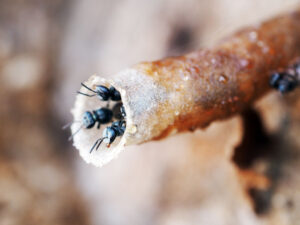By Ravi Singh
One morning, as the sun peeked over the garden wall, my gardener approached me with a troubled expression. “Sir,” he said, “insects are eating the leaves of our plants. We must spray and kill them immediately!”
Curious and concerned, I followed him to inspect the damage. To my surprise, the insects weren’t ‘harmful pests’ at all; they were caterpillars. As a proud member of Nature Kenya, a group dedicated to conserving wildlife and ecosystems, I recognized them immediately.
I snapped a photo and shared it with our Nature Kenya community. Within minutes, someone identified them as Acraea butterfly caterpillars. The news stunned my gardener. “Butterflies come from these? But they’re ruining the plant!” he exclaimed.
The plant in question was Tinospora, a climber with heart-shaped leaves. Interestingly, Tinospora isn’t native to Africa. It originates from India and has been valued for its medicinal properties for centuries, even mentioned in ancient Indian texts. Why did this butterfly choose an exotic plant for egg-laying? Perhaps it was a silent sign: as native plant species vanish due to human development, butterflies have fewer choices. They adapt, turning to whatever is available, often the non-native plants people grow for beauty over biodiversity.
That moment was an awakening.
Many people, like my gardener, don’t understand the butterfly life cycle. They see hungry caterpillars and think ‘destruction,’ unaware that these fragile creatures are on a delicate journey toward becoming pollinators: essential links in our ecosystem.
Most butterflies don’t migrate far. If their host plants are lost, their populations can collapse. Their survival depends entirely on us creating safe spaces and letting nature take its course.
One Nature Kenya member suggested something unconventional: “Why don’t you raise them?”
I had an old empty aquarium. With curiosity and care, I gently transferred the caterpillars into it and began feeding them fresh Tinospora leaves each day.
In less than a week, a miracle began. One by one, the caterpillars stopped eating and crawled to the corners of the glass. Hanging upside down, they transformed into pupae: lifeless and still, like tiny sculptures suspended from the roof.
“Are they dead?” someone asked.
“No,” I smiled. “They’re just dreaming.”
On the sixth day, I saw movement. One chrysalis cracked open, and a beautiful Acraea butterfly emerged, wings soft and shimmering like painted silk.
Then came another, and another. By the end of the week, 30 butterflies had emerged, a 100% success rate!
I called the gardener over. As he watched those butterflies flutter inside the aquarium, his face softened. “You were right,” he whispered.
He had witnessed a transformation, not just of caterpillars into butterflies, but of perception into awareness.
Why This Matters
Butterflies aren’t just beautiful; they are pollinators, indicators of environmental health, and part of the web that sustains life on Earth. If butterflies disappear, so do many plants and animals that depend on them. Raising awareness about their life cycle and habitat needs is crucial.
Why This Was a Celebration
This reminded me – and now perhaps you – that hope can be nurtured in a glass box. Even small creatures like caterpillars deserve our patience, protection, and understanding. It was a celebration of life, of nature’s resilience, and of the power of one small decision to make a difference.
So next time you see a half-eaten leaf, don’t rush to destroy. You might be looking at the first chapter of a butterfly’s story.
And like I did, you too can become part of that miracle.
What We Can Do
- Don’t kill caterpillars blindly. Identify them first.
- Grow native plants, not just decorative ones. Native flora supports native fauna.
- Avoid pesticides; they don’t discriminate between pests and pollinators.
- Teach children the butterfly life cycle. They learn empathy through observation.
- Join nature groups like Nature Kenya. Collective learning leads to stronger action.

